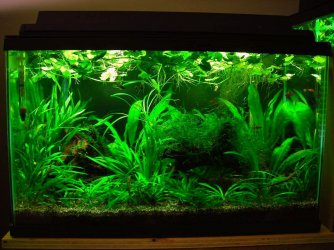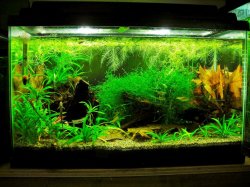So I have a 10 gallon tank that is very lightly planted. I have small bunch of Java Fern on some driftwood, and some Anubias nana.NO special gravel,special lighting,CO2, or fertilizers YET. My tank has very low LED lights. But I've surprisingly gotten 4 or 5 new growth from the rhizomes and mother plants, a couple weeks after I got them
 . I have some Flourish (just the regular Seachem Flourish, NOT the excel or phosphorus or anything like that) and i wanted to use it in my 10 gallon. The thing is the directions on the bottle is not very clear on how to dose it for anything smaller that 60 US gallons.It doesn't say you have to use Xml for 1 US gallon. I haven't used flourish before, or any fertilizers for that matter so here are my questions.
. I have some Flourish (just the regular Seachem Flourish, NOT the excel or phosphorus or anything like that) and i wanted to use it in my 10 gallon. The thing is the directions on the bottle is not very clear on how to dose it for anything smaller that 60 US gallons.It doesn't say you have to use Xml for 1 US gallon. I haven't used flourish before, or any fertilizers for that matter so here are my questions.
1) How much Flourish should i use for 10 gallons?For Example; X millimeters for 1 gallon
2) How often should I dose the tank with flourish? Everyday, every other day... after every water change....etc
3) Will Seachem Flourish hurt my Male Veil Tail Betta?
4) Is flourish ok to use with java fern and anubias nanas?
5) I dont have to use any other Seachem products along with the regular flourish right?
BTW: Using CO2 is not really an option for me
1) How much Flourish should i use for 10 gallons?For Example; X millimeters for 1 gallon
2) How often should I dose the tank with flourish? Everyday, every other day... after every water change....etc
3) Will Seachem Flourish hurt my Male Veil Tail Betta?
4) Is flourish ok to use with java fern and anubias nanas?
5) I dont have to use any other Seachem products along with the regular flourish right?
BTW: Using CO2 is not really an option for me



